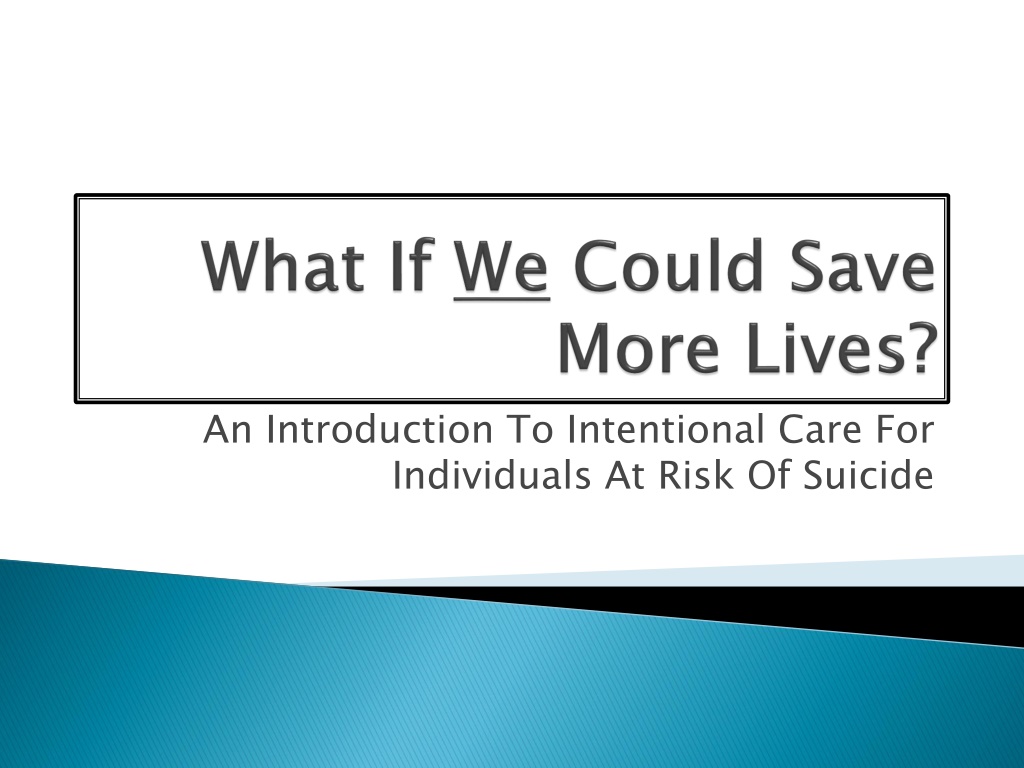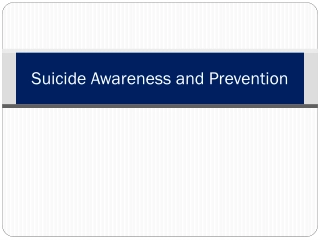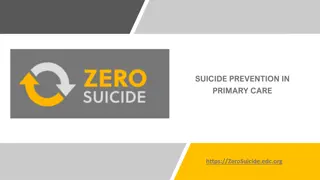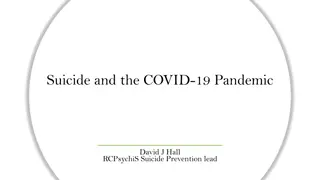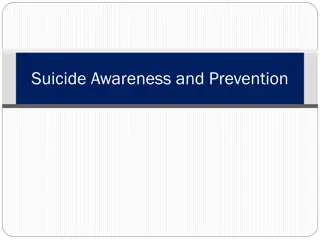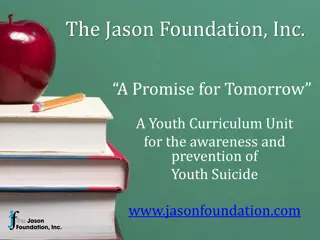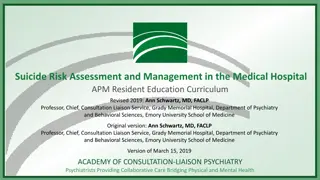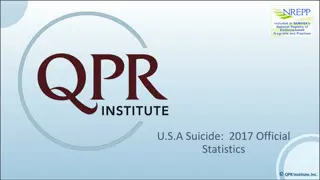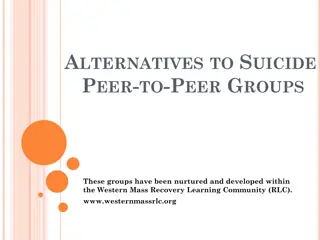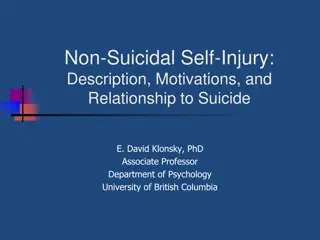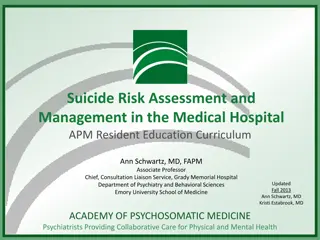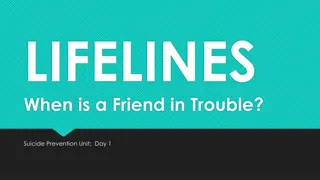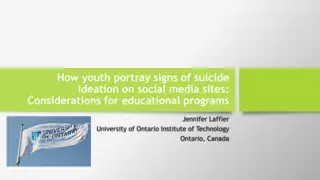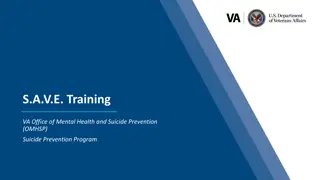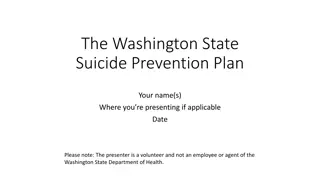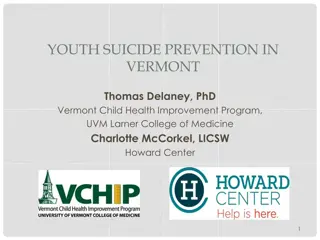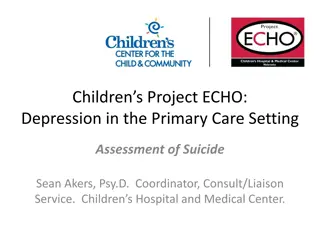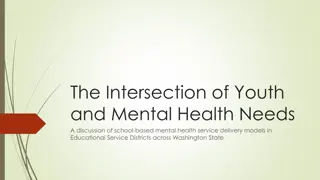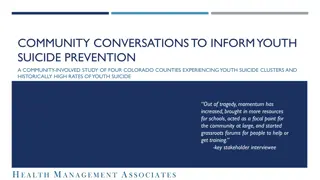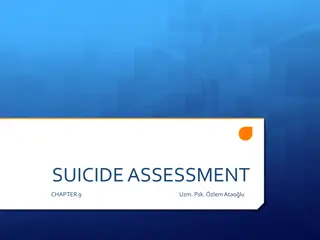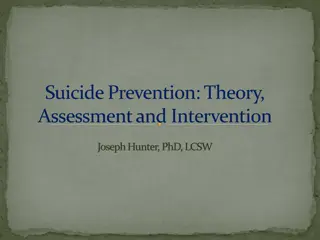Understanding and Addressing Suicide Risk: An Intentional Care Approach
Over 42,000 Americans die by suicide annually, highlighting the critical need for intentional care strategies. The statistics reveal concerning trends, emphasizing the importance of targeted interventions in mental health and primary care settings. Licensed clinicians often lack the necessary skills and training, underscoring the need for a shift in suicide prevention approaches. Dr. Richard McKeon points out the systemic shortcomings in current care models. Despite existing hotlines and programs, the national suicide rate has risen, necessitating a fresh perspective on tracking and caring for individuals at risk.
Uploaded on Oct 08, 2024 | 0 Views
Download Presentation

Please find below an Image/Link to download the presentation.
The content on the website is provided AS IS for your information and personal use only. It may not be sold, licensed, or shared on other websites without obtaining consent from the author. Download presentation by click this link. If you encounter any issues during the download, it is possible that the publisher has removed the file from their server.
E N D
Presentation Transcript
An Introduction To Intentional Care For Individuals At Risk Of Suicide
Over 42,000 Americans die by suicide every year. For every death, 25 suicide attempts occur. In Oregon, one person dies by suicide every 11 hours. Clackamas County loses 52 people a year to suicide. 5 of these are youth ages 10 24.
One out of every four people who attempt suicide will spend just 5 minutes contemplating killing themselves before they make an attempt. 70% will decide in less than 1 hour. 52% of deaths by suicide have involved a gun.
In the month before their death by suicide: Half saw a primary care provider 30% saw a mental health professional Risk of suicide is highest in the first 30 days following discharge from: An emergency department An inpatient psychiatric unit
Suicide prevention has historically been the core responsibility for behavioral health care systems. Many licensed clinicians do not feel prepared 39% report they don t have the skills to engage and assist those at risk for suicide 44% report they don t have the training
Over the decades, individual (mental health) clinicians have made heroic efforts to save lives but systems of care have done very little. Dr. Richard McKeon SAMHSA
The U.S. has national suicide hotlines, and there are suicide prevention programs in every state. There's screening and educational programs. Yet over the past decade, the national suicide rate has increased. At the same time, aviation safety, automobile safety, homicide rates, stroke, HIV/AIDS and leukemia rates have all decreased. In 2003, the suicide rate was 10.8 per 100,000 people. In 2013, it was 12.6. What is our approach to caring for and tracking individuals at risk for suicide? It s time to look at it differently.
Attempting to reduce suicides for people in our care to zero may seem scary or even impossible but what other number should we strive for? What if we shifted our perspective that 52 deaths is too many and that zero was the only acceptable number?
Zero Suicide is a commitment to suicide prevention in health and behavioral health care systems. A specific set of strategies and tools. Develop intentional pathways to care for suicidal individuals not unlike an intentional pathway for someone with diabetes. Making this work everyone s business. No longer the burden of one person or one team. A commitment to reduce suicide deaths and provide suicide safer care in those we serve.
Shift from stand alone training & tools to overall system and culture change. Shift from individual clinician judgment & actions to standardized screening, assessment, risk stratification, and intervention. Treating thoughts of suicide versus managing them.
What does this work have to do with my Division?
In what ways can my Division provide suicide safer care?
H3S Director Rich Swift announces a commitment to the Zero Suicide initiative and invites all 500+ H3S staff to get trained to help by taking Mental Health First Aid. Behavioral Health, Public Health, Health Centers, Housing & Community Development, Social Services Divisions have introduced Zero Suicide at all staff meetings. Over 350 staff have voluntarily taken the Zero Suicide workforce survey. This information has allowed us to better understand staff beliefs, knowledge and perceived level of support in working with and treating individuals at risk of suicide.
All 7 Divisions in H3S will be invited to develop Zero Suicide planning teams. Each Division will be represented at the larger H3S planning team and provide recommendations to H3S Leadership as to how to operationalize this initiative across the Department. Timing will be = a marathon versus a sprint.
It is critically important to design for zero even when it may not be theoretically possible It s about purposefully aiming for a higher level of performance. Thomas Priselac President and CEO of Cedars-Sinai Medical Center
